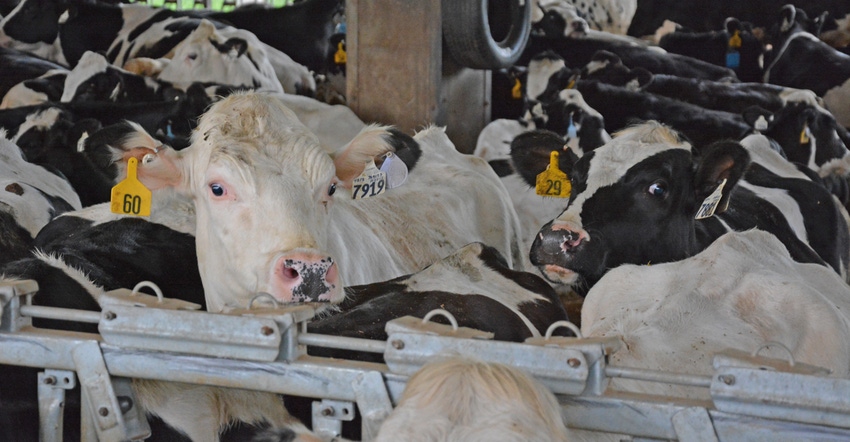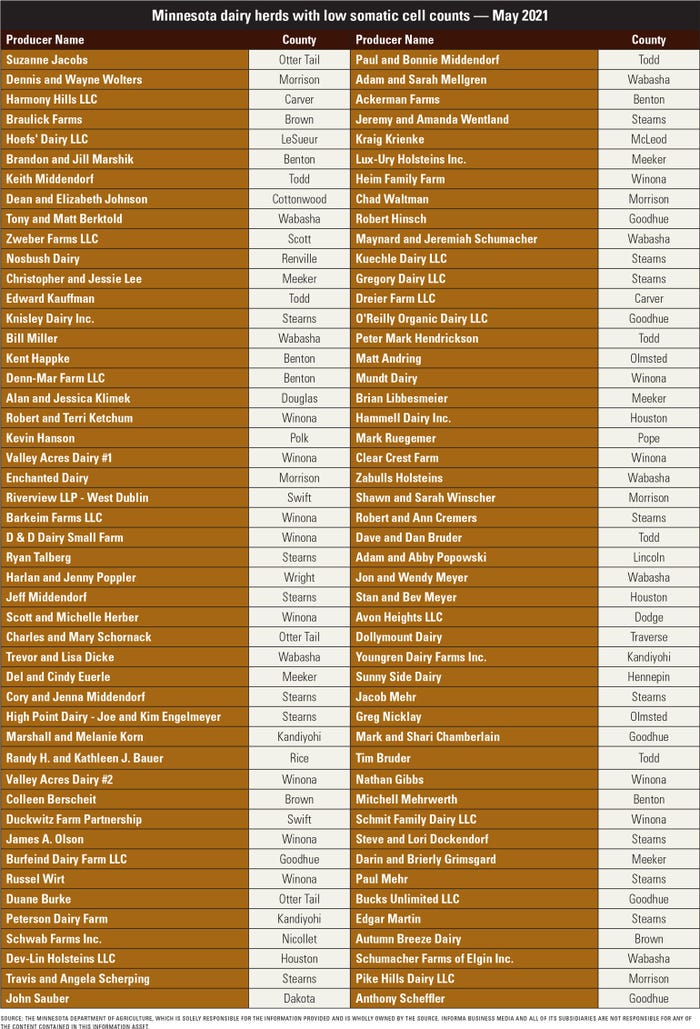June 15, 2021

The Minnesota Department of Agriculture recently released its annual list of top Minnesota dairy herds with low somatic cell counts (SCC).
Somatic cell count is a key indicator of milk quality — a lower SCC count is better for cheese production and gives bottled milk a longer shelf life. In honor of June Dairy Month, 96 Minnesota dairy farms are being recognized for superior herd management skills by achieving an average SCC of under 100,000.

“I’m honored to be able to recognize these 96 dairies for their high level of excellence,” says Thom Petersen, ag commissioner. “These dairy farmers work hard 365 days a year to produce high-quality, wholesome dairy products for all of us to enjoy, and I thank them for their contributions to feed Minnesota and the world.”
Although somatic cells occur naturally and are not a food safety concern, dairy farmers monitor them because they can be used as a measure of the health of their cows. Processors also pay a premium for milk with low counts. A farmer whose herd has a very low count can receive a significantly higher price per hundredweight compared to a farmer whose herd SCC average is high.
MDA and University of Minnesota Extension dairy specialists have worked with the state’s dairy farmers to lower somatic cell counts. When the initiative began in 2003, the 100 herds honored that year included those with SCC averages as high as 144,000, compared to the current goal of obtaining an SCC under 100,000.
Source: The Minnesota Department of Agriculture, which is solely responsible for the information provided and is wholly owned by the source. Informa Business Media and all of its subsidiaries are not responsible for any of the content contained in this information asset.
You May Also Like




